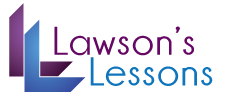Developing Effective Main Points
Using the media to structure a speech
Objective: Students will be able to pinpoint a subject/thesis’ main aspects to advance the message of a speech
Materials: Computer Access for all students (student may be divided into groups to share a computer if needed)
Steps:
- Have students select a major current event in the media. All of the students can research the same event, or they could research their own event in no more than three groups. Make sure the subject isn’t too broad (the Iraqi War) or too narrow (something only covered on a local level).
- Instruct students to look for information on this event using several different web sites (CNN.com, BBC.com, ect…). Make sure they are all online media sites.
- Inform the students before they begin that they are to look for common threads or facts that are included in all of the stories regarding their chosen current event.
- Have the students compile a list of as many common facts and figures (3-5 will suffice) that are present between the different versions of the current event.
- Make a three columned chart on the board. Have the first column be Causes, the section Effects, and the third Solutions.
- Through classroom discussion, fit the common facts and figures into one of the three columns. Once all of the common threads are classified, make a statement for each column that will encompass all of the information placed inside it.
- Use these statements as example main points for the current event. Be sure to discuss with the class that the main points of a speech are derived from repeating themes that occur during research.
Results: Assign students to research another current event using only a single newspaper. Instruct them to classify the Cause, Effect, and Solution of that single story.
Grant Campbell
6/4/07
Main Points
The most important object in the room
Objective: After completing this activity, the student will be able to create and identify the main points in a speech.
Materials: Each pair of students needs a sheet of paper and a writing utensil. A classroom with various objects is also needed, including a chalk or white board.
Steps:
1. Pair students into groups of two.
2. Hand out one sheet of paper and one writing utensil to each group.
3. Explain the activity and conditions: Each group will survey the room and pick out one object that they believe
is the “most important object in the room.” This object may not be a person. The students should write the selected object on the piece of paper without sharing their choice with other groups. Next, each group must provide at least three written reasons why their object should be selected as the most important object in the room.
4. Give an example: “I think the most important object in the room is the chalkboard (or whiteboard). The chalkboard is the most important object because of its size, its location at the front of the room, and because it can be written on.”
5. Give the students enough time to complete the task. (Approximately five minutes)
6. Allow the students, one group at a time, to share their answers out loud with the rest of the class.
7. Have the class evaluate each group’s main points, and discuss with the class why some points were more effective than others and other points that each groups could have presented to the class that would have supported their claim. Reiterate that the points presented for each object are examples of the main points of a speech.
Results: Students will have the ability to produce main points supporting their topic selections.
Stephanie Gray
September 5, 2007
Main Points
A bag of tricks
Objective: Following the completion of this lesson, students will be able to create at least three main points for a speech, as well as identify the main points in other speeches, while becoming more comfortable speaking in front of their peers.
Materials: The students will need only paper and a pencil or pen. The teacher, however, will need a bag of at least 30 various objects (keys, pencil, pen, notepad etc.).
Steps:
1. Each student will pull an object out of the teacher’s bag of tricks.
2. The object selected becomes the topic of the student’s speech.
3. Each student will create three points based on three questions:
– What does the object do?
-What does the object look like?
– Why is it important?
4. The answers to these ideas will stand as the three main points in their speech.
5. When finished, each student will give an impromptu speech simply explaining how they created their main points, focusing on answering the questions previously listed.
6. In response to each person’s speech their classmates will give written feedback on whether their main points functioned well as main points and if they didn’t then why not. This feedback will be done anonymously, on personal sheets on paper so each person can give an honest evaluation.
Results: Students will be able to create at three main points in a speech, while also being able to identify the main points in other speeches. Students should review the material they worked on, and adjust their main points in accordance with their constructive feedback. They should come to class the next day with a list of three sub points under each main point. The questions listed should help them with their sub-points as well.
Results: Students will be able to create at three main points in a speech, while also being able to identify the main points in other speeches. Students should review the material they worked on, and adjust their main points in accordance with their constructive feedback. They should come to class the next day with a list of three sub points under each main point. The questions listed should help them with their sub-points as well.
Katie Hall
2 September 2009
